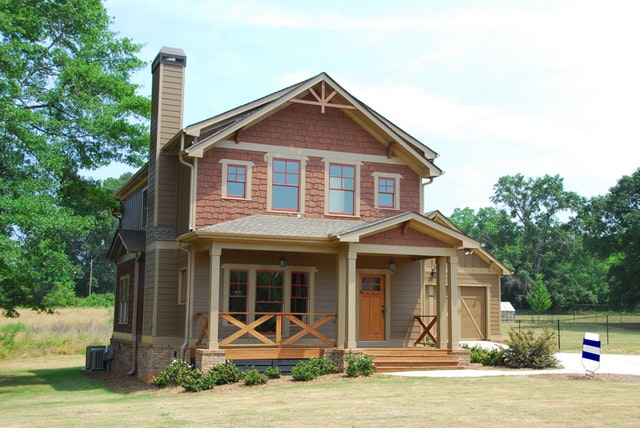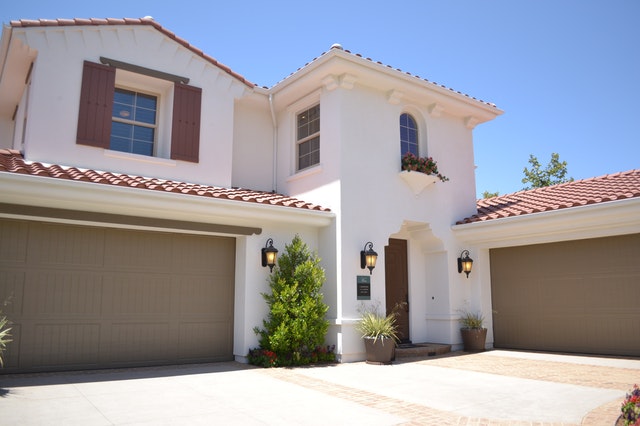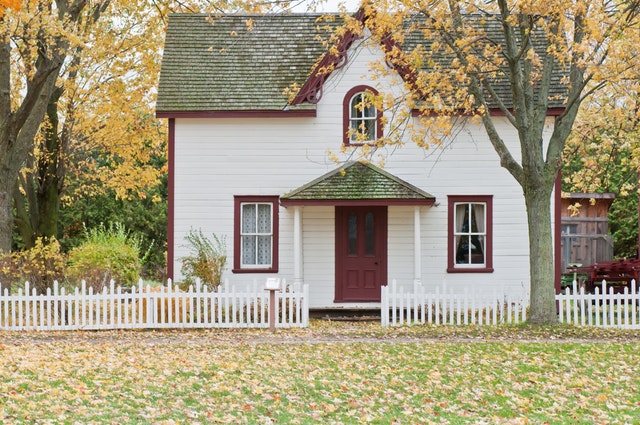In this post we’ll talk about how to invest in real estate with low income.
These days it seems like people are making money from real estate investments left and right. But how do they do it? Don’t you need a lot of money to get started, and how can you invest in a way which guarantees a profit?
The good news is, investing in real estate doesn’t have to be a full-time lifestyle. It makes a great side hustle, and these days it’s easier than ever to allocate some of your wealth into real estate and see a decent return. Nonetheless, the world of real estate investment is a complex one. This article will help to clear up some of the jargon and figure out what option is best for you.
The first two options involve a hands-on approach to real estate investment. Whilst they involve a lot of work, they avoid a lot of the more complex financial aspects of real estate investment. Enjoy this post on how to invest in real estate with low income!
Six Ways to Invest in Real Estate Today
1. House hacking and the stepping stone approach
If your approach to real estate investment is a hands-on one, it’s a good idea to start off with what’s called the ‘stepping stone approach.’ Simply put, this involves your current property becoming your first real estate investment when you move into a new property. Most likely, this will involve retaining ownership of the original property and renting it out to cover the mortgage and expenses of your new home.
This is an increasingly popular option since market appreciation (the value of a property rising beyond what you paid for it) is rare. If your current home is in an area where rental prices are higher than the monthly payments on your new mortgage, you’re much more likely to make a profit by renting out (rather than selling) your property.
A similar approach is something known as ‘house hacking’. This involves purchasing a multi-family property and inhabiting one of the units whilst renting out the other(s). The rental income pays your mortgage and living expenses. Eventually, you find yourself in a position to move into a new property, and rent out the unit you previously inhabited. This additional income goes towards your new mortgage, and your real estate portfolio grows. This is a great way to start out in real estate as it’s a clear pathway towards more investments – hence the ‘stepping stone’ concept.

2. The live-in flip
The live-in flip is a similar approach to house-hacking, but with a few distinct differences. A live-in flip involves buying a house which is in live-able condition but in need of repairs, and living there whilst you renovate it. You can choose the size of the project you’re willing to take on; some properties just need the kitchen and bathrooms to be refitted, whereas others need to be completely overhauled and updated.
The idea behind the live-in flip is that you’re able to purchase a run-down property at a low price, carry out the necessary repairs, then sell it at a higher price (or rent it out) in order to make a profit. One of the benefits is that you don’t have to pay additional rental or mortgage costs on another property to live in whilst working on the project. The downside is, of course, you’re effectively living on a construction site for a few months at least. Whilst it’s not for everybody, the huge potential for tax-free profit can make it worth the upheaval.
Before committing to the live-in flip, it’s important to get a reliable estimation for the post-repair value of the property. You can do your own research by looking into the value of similar properties in your area, but it’s a good idea to have a professional assessment carried out by a local real estate agent too.
You then need to come up with an estimate for the repair costs. These can vary hugely depending of what needs to be done, and how much of the work you’re able to do yourself. Of course, the more work you do yourself, the less repair costs you’ll need to account for in your budget.
To calculate a preliminary estimate for your potential profit, subtract your projected repair costs and the current price of the property from the estimated post-repair value. Allow for a wide margin in your repair budget, especially if this is your first project, as things don’t always go to plan!
The great thing about the live-in flip is that it’s a reasonably low-risk venture. If the project takes longer than expected to complete or you don’t manage to sell or rent it out right away, you’re still living there and getting use out of it. And as profits on homes up to a certain amount are not taxed, your profit is your own (but be sure to consult a tax expert before making any decisions based on this assumption).
3. Buying a ‘turnkey’ property
House hacking and live-in flips aren’t for everyone. If you don’t have the time or interest in these hands-on methods, investing in a turnkey property could be a good alternative. This approach follows a similar process, but a turnkey company helps you to find the property, analyze it, buy it, and they even manage it for you.
Turnkey companies vary one to the next and have different ways of operating. Some turnkeys deal with the purchase and renovation of properties themselves, whereas others will outsource repair work to outside companies. Some will take on management of the property themselves, where others will connect you with another business which will manage it on your behalf. If you’re considering working with a turnkey company, make sure you’re clear on how exactly they operate before signing a contract.
The most appealing aspect of using a turnkey company is, of course, the convenience. You get to invest without having to search for an appropriate property or coordinate and carry out the repairs. Turnkey companies also tend to deal with cheaper properties, which means your initial investment could be lower than if you were to do a live-in flip. It’s worth bearing in mind, however, that unlike the live-in flip, you’ll need to account for mortgage or rental costs on a separate property to live in whilst waiting to see a return on your investment.
It’s also important not to let the convenience of turnkey property investment blind you. Always have the property valued and repair costs estimated by impartial external companies to ensure the turnkey property is giving you your fair share of the profits. And watch out for the high fees they might for their services; they’re doing this to make money, after all.

4. Team up with other investors
If you want to invest in real estate but don’t want the weight of taking ownership of a property, or you want to make money but lack interest in the process of buying and developing a house, becoming a partner in an investment could be an option for you. Professional investors are frequently put their money into new projects, and they often look for partners to inject some extra cash into their ventures.
There are different ways to enter into a partnership, and you should be careful to find the right arrangement for you. If you enter into a partnership as an equity investor, for example, you’ll be gaining ownership of an agreed share of the property. If you enter a partnership as a lender, you’ll invest money and be entitled to a financial return, without taking any share in the ownership.
Investors commonly look for lenders when house-flipping. You can become a lender simply by funding some of their renovation costs, or by funding the purchase and repair projects. Each investment opportunity is different, and the exact terms will be agreed between you and the investor. Brining a bigger investment to the table will allow you more power in negotiations, and could secure you a more favorable deal.
Finding investors to partner with can be difficult since advertising for an investment partner is, technically-speaking, illegal. The best way to go about finding a partner is by becoming active in your local investment scene. Attend investor meetings or, if you don’t live in an area with a prominent real estate scene, try networking online.
Attending investment meetings can also lead you to the opportunity to join a syndication. This is where groups of investors put their money into down payment on a large property, and the rest is financed by sponsors. Unlike a partnership where your investment is totally negotiable, however, entry into a syndicate always involves a minimum investment.
5. Crowdfunded real estate
Crowdfunded real estate is a relatively new approach to real estate investment. If you’re unfamiliar with the concept of crowdfunding, it involves a group of investors putting their money into a large real estate project, and sharing the profits. If you’re thinking this sounds a lot like syndication, you’d be right; the key distinction here is that crowdfunding happens online.
The benefits of the crowdfunding approach are that they tend to have quite a low minimum investment, and the crowdfunding platforms vet projects to weed out unsafe deals. However, it can be more difficult to get in on crowdfunded real estate projects as they’re only open to accredited investors. If you’re not accredited you could try partnering with an accredited investor, or buying into a Real Estate Investment Trust (read on to find out more about these).

6. Real Estate Investment Trusts (REITs)
A Real Estate Investment Trust, known as a REIT, is a company which owns and manages a large-scale portfolio of commercial real estate and allows small investors to invest. REITs can be great if you want to get a foot in the door of real estate with a relatively small investment, and can be a great way to bring diversity into your real estate portfolio. Before you jump in, however, it’s important to understand that are three main types of REITs: public exchange-traded REITs, public non-traded REITs, and private REITs; there are some key differences between them.
Public exchange traded REITs are obligated meet all the Securities and Exchange Comission (SEC) requirements to be listed on a stock exchange. This means they’re highly regulated, and in order to maintain their status, they must distribute at least 95% of their earnings to shareholders. They also have the benefit of being highly liquid, meaning your investments can be converted into cash without significantly losing value. Public exchange traded REITs are therefore largely regarded as the popular and ‘safe’ option for REIT investment, although they do tend to impose higher fees on investors.
Public non-traded REITs have to meet the same SEC requirements as exchange-traded REITs, but they are not traded on an exchange. They have the benefit that the value of your investments won’t fluctuate with the market. On the downside, these properties have no specified selling period, meaning investments are illiquid for extended periods of time, and you invest without knowing when you’ll see a return.
Private REITs are different to their public cousins in that they’re not listed on any exchange. This means they are not under obligation to meet any of the SEC requirements. This freedom can mean higher returns, but it also makes them inherently less trustworthy. Private REITs may also charge higher fees, making it more difficult to make money from your investments.
Overview
To summarize, the options for investing in real estate are numerous, and go well beyond the scope of this article. The best option for you depends on how much you’re able to invest initially, how much risk you’re willing to take, and whether or not you want to be involved in the process of buying and renovating properties.
Whichever avenue you take, the main thing to keep in mind is that you need to be scrupulous. It sounds obvious and perhaps even patronizing, but it’s not uncommon for investors to get caught out by surprise fees, hidden terms, or catches in the small print. So when entering the world of real estate investment, take your time. Do your research. And remember: there’s no (legal) way to make easy, fast money in this world. If an investment sounds too good to be true, it probably is.
Hope you enjoyed this post on how to invest in real estate with low income, and let us know in the comments if you have other feedback.



Comments 1
Thank you for sharing this kind of information and very helpful for everyone in every aspect